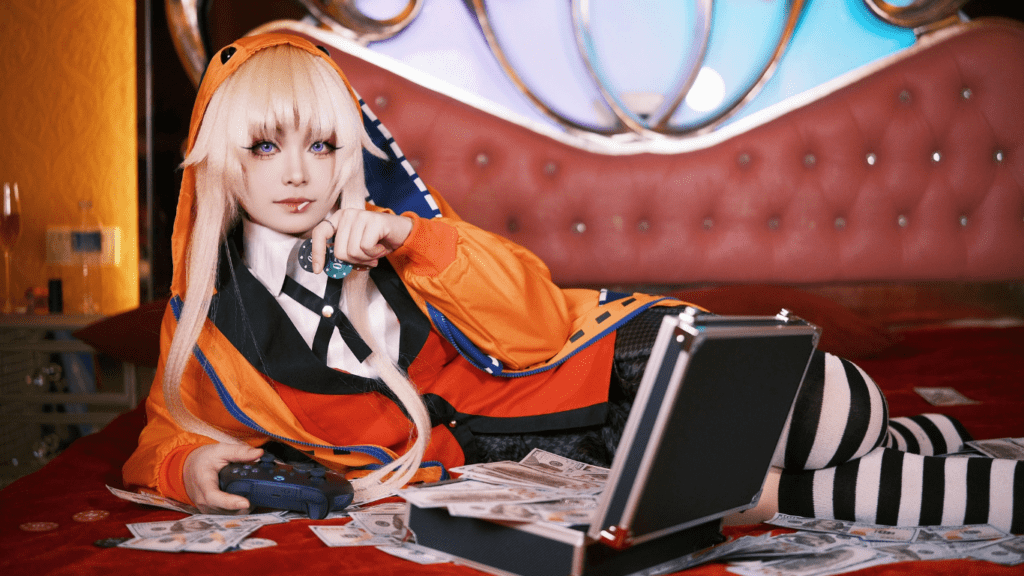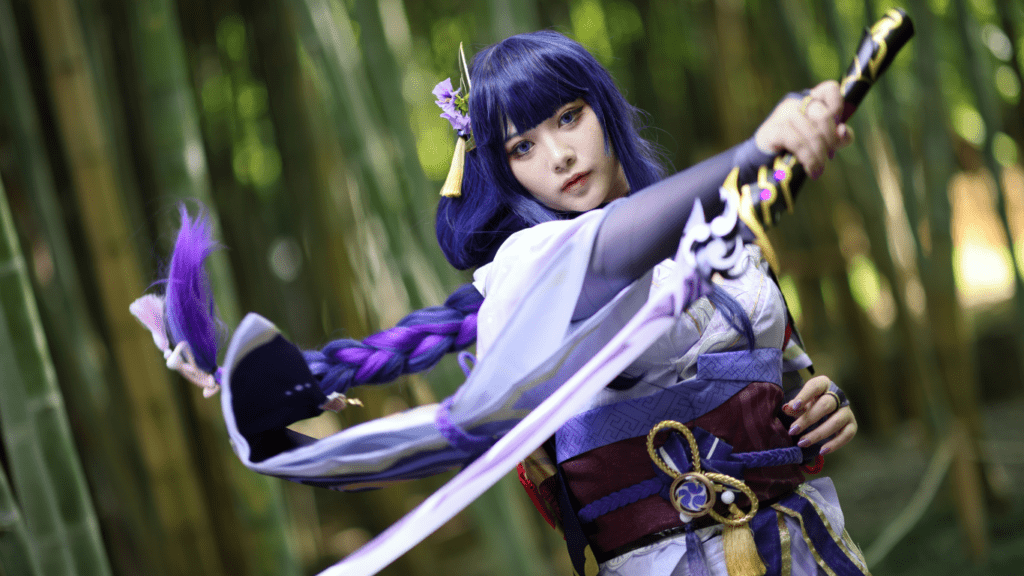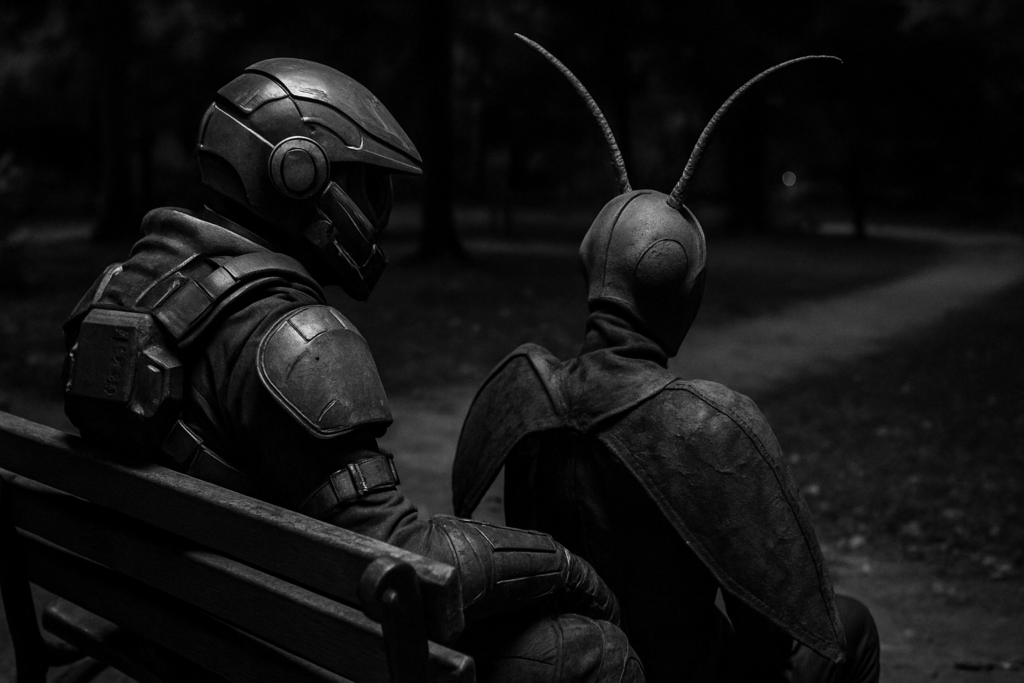Cosplay isn’t just about the costume—it’s about transforming into a character and bringing them to life. For me, makeup is where the magic truly happens. It’s the secret weapon that takes a look from good to jaw-dropping, helping every detail of your character shine through. Whether you’re recreating a fierce warrior or a whimsical anime protagonist, the right makeup can make all the difference.
Understanding The Art Of Cosplay Makeup
Cosplay makeup combines traditional makeup skills with creative techniques to replicate a character’s features. It’s more than accentuating beauty; it’s about crafting a compelling visual narrative that matches the character’s aesthetics. From bold contours to exaggerated eyes, every detail matters in creating authenticity.
Facial features such as scars, wrinkles, or unique markings are essential elements to master. For example, replicating the sharp cheekbones of an anime villain or the soft blush of a cheerful protagonist requires precision and layered application. Using reference images helps ensure accuracy in these transformations.
Color theory plays a significant role in cosplay makeup. Selecting the right shades for skin tones, hair colors, and costume materials creates balance in the final look. For instance, warm tones complement characters with fiery personalities, while cooler colors suit mysterious or icy figures.
Textures and finishes, like matte for rugged characters or shimmer for ethereal beings, enhance the overall portrayal. Pairing specific makeup products, such as body paints or prosthetics, with the character’s traits ensures a more polished result.
Essential Tools And Products For Cosplay Makeup
The right tools and products elevate cosplay makeup, turning creative visions into reality. Investing in quality essentials ensures precision and enhances character authenticity.
Must-Have Makeup Supplies
Certain tools form the backbone of cosplay makeup. Here’s what I always keep in my kit:
- Primer: Creates a smooth base and helps makeup last through long events.
- Foundation and Concealer: Match skin tones or create specific effects like paleness or unnatural hues.
- Eyeshadow Palette: Offers versatile shades for blending, shading, or mimicking unique features.
- Eyeliner and Mascara: Defines eyes and adds intensity to animated or dramatic looks.
- Lip Products: Includes lipsticks, liners, and glosses for altering lip shapes or colors.
- Setting Spray and Powder: Seals everything in place for smudge-free wear.
- Special FX Items: Scar wax, latex, and fake blood help create wounds, scars, or textures.
- Brushes and Sponges: Variety ensures precise application for blending or detailing.
- Body Paint: Required for full transformations like bluish alien skin or metallic armor.
Choosing The Right Products For Your Character
Each character’s design determines product selection. I analyze traits and adapt accordingly:
- Skin Tone and Finish: For shiny androids, I opt for reflective highlighters; for earthy creatures, matte textures work best.
- Color Usage: Bold tones suit cartoons, while subtle hues complement live-action characters.
- Details and Effects: Characters with scars or tattoos call for professional-grade FX kits or stencils.
- Waterproof Formulas: I prefer these for sweaty convention halls or outdoor events to ensure durability.
Accurate product choices enhance character fidelity and make complex designs achievable.
Mastering Basic Techniques
Mastering fundamental methods is the foundation for achieving an authentic cosplay look. Effective application techniques ensure makeup enhances rather than distracts from the character’s design.
Foundation And Contouring For A Flawless Base
Creating an even, smooth base starts with foundation matching the specific character’s skin tone. I choose full-coverage products for consistency and apply with a sponge or brush to eliminate streaks. For characters with non-human skin tones, specialized body paints or color-correcting bases maintain realism.
Contouring builds depth to mimic the character’s bone structure. I use darker shades on the hollows of cheeks, temples, and jawlines, adjusting placement based on reference images. A well-blended contour emphasizes sharp features or softens the face based on the character’s design.
Highlighting And Shading To Enhance Features
Highlighting draws attention to key areas like the cheekbones, brow bones, and nose bridge. I use lighter, shimmery shades to replicate a radiant effect for ethereal or animated characters. Matte highlighters suit more realistic or muted designs.
Shading defines additional elements, such as enhancing expressions or mimicking aging effects. I layer gray or brown tones sparingly to create shadows under the eyes, around the mouth, or on the forehead, depending on the character’s mood or story. Using a fine brush ensures precision in detailing.
Creating Character-Specific Looks

Accurately replicating a character’s appearance elevates a cosplay from good to unforgettable. With the right approach, makeup can transform features to match the unique aesthetics of anime, comics, or other sources.
Transforming Into Anime Characters
Anime characters often feature exaggerated facial traits like large eyes, vibrant hair shades, or flawless skin. To replicate these:
- Eyes: Use white eyeliner and large false lashes to create an illusion of oversized eyes. Circle lenses in bright colors mimic their distinctive irises.
- Complexion: Achieve a smooth, porcelain-like base with full-coverage, matte foundation. Apply subtle blush to match the character’s color palette.
- Brow Shapes: Use brow pencils to reshape or fill in eyebrows, focusing on the character’s specific style, like sharp angles or colorful arches.
- Hairline Detailing: Blend body paint or eyeshadow into your hairline for characters with unnatural hair colors, such as blue or pink, ensuring seamless accuracy.
For maximum accuracy, closely study references, paying attention to character expressions or shading techniques that emulate anime art styles.
Adapting Comic Book Styles
Comic book aesthetics often highlight dramatic features, bold lines, and vivid colors. Attention to detail is essential:
- Outlining Features: Mimic the art style by outlining facial features, like cheekbones or jawlines, with black eyeliner or body paint, creating a cell-shaded effect.
- Shading and Highlighting: Use exaggerated contouring and contrasting highlights to imitate the dynamic lighting common in comic illustrations.
- Bold Colors: Choose brightly pigmented lipsticks, eyeshadows, or blushes that reflect the saturated hues in comic panels.
- Iconic Details: Recreate unique traits, like Harley Quinn’s smudged makeup or Joker’s darkened eyes. Include these signature elements to emphasize the character identity.
Adapt your techniques to match the stylistic variations of specific comic publishers, such as DC’s gritty realism or Marvel’s vibrant tones. This alignment ensures faithfulness to the original artwork.
Perfecting Special Effects Makeup
Special effects makeup transforms a cosplay look from ordinary to extraordinary by adding intricate details and textures. It helps replicate scars, wounds, and other unique features that define a character’s appearance.
Using Prosthetics And Latex
Prosthetics and latex enhance character accuracy by adding realistic textures and dimensional details. I prioritize purchasing high-quality prosthetics designed for cosplay or theater use. To attach them securely, I use skin-safe adhesive like spirit gum or pros-aide. Edges blend seamlessly with liquid latex or a thickened adhesive to avoid visible lines.
For characters with scars, burns, or unique facial structures, I sculpt latex or use pre-made molds. For example, scars can be created with rigid collodion or scar wax shaped to the desired form. Liquid latex simulates burns or aged skin effectively. I ensure all products match the skin’s tone or costume shades by using makeup to blend them into the final design.
Adding Realism With Body Paint
Body paint completes the look by adding vibrant color and realistic shading to exposed skin. I use alcohol-activated paints for durability, especially for conventions, and water-based paints for intricate designs requiring easy blending. A small, detailed brush ensures precision when mimicking tattoos, veins, or character-specific patterns.
Shading adds dimension and depth. I highlight raised areas like muscles and shadow recessed parts for a lifelike effect. For reptilian or alien characters, I use stencils to create textured scales or patterns. Sealant sprays lock the paint, preventing smudging during prolonged wear. These techniques ensure the body paint appears cohesive with the costume and makeup, making the cosplay look immersive.
Maintaining Your Look Throughout The Day
Keeping makeup intact during long cosplay events is essential for maintaining the character’s appearance. Proper techniques and tools help prevent smudging, fading, or cracking as the day progresses.
Setting Your Makeup For Longevity
I always secure my makeup with high-performance setting products to ensure it lasts. A setting spray designed for long wear locks in layers of foundation, contour, and special effects makeup. Translucent setting powder prevents oil buildup by mattifying key areas like the T-zone. For intricate designs, such as body paint or prosthetics, I use professional-grade sealants. Alcohol-activated paints and durable adhesives are ideal when creating textured looks. It’s crucial to let each layer dry fully before applying the next to avoid smearing. For warm or crowded venues, I prefer sweat-resistant and waterproof formulas to withstand high humidity.
Quick Touch-Up Tips During Events
I carry a compact touch-up kit for emergencies. This usually includes a small brush set, pressed powder, blotting papers, and miniature versions of primary products like lipstick, eyeliner, or body paint. For smudged lines, I use precision cotton swabs dipped in micellar water for corrections. Blotting papers help control shine without disturbing makeup. A portable setting spray keeps makeup refreshed midway through the event. To fix any lifting prosthetics, I apply skin-safe adhesive sparingly, prioritizing a secure but natural finish. When adhering to these tips, I ensure my cosplay presentation remains consistent, even in dynamic environments.





